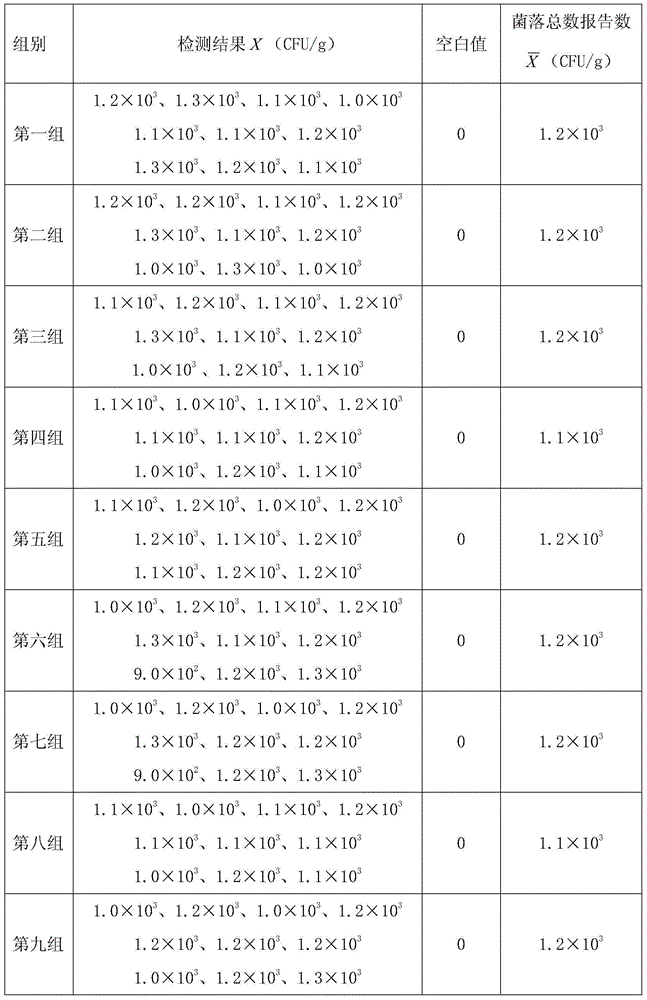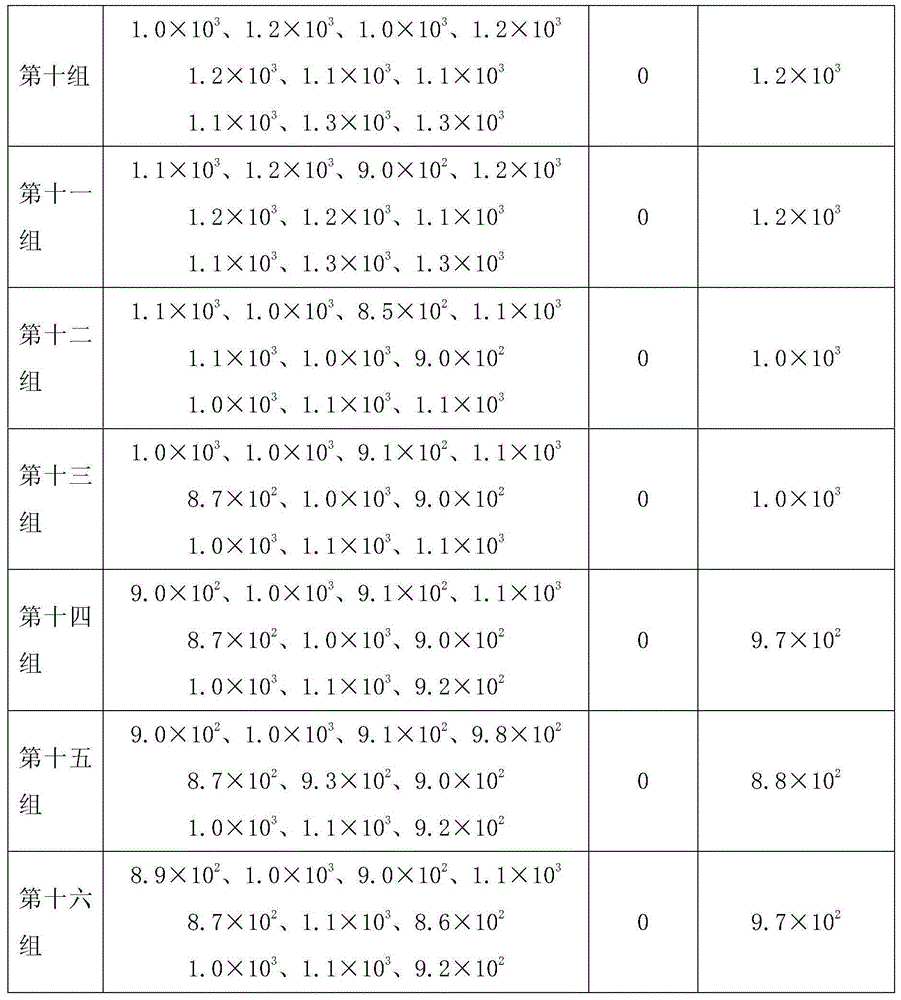Bacterial colony chromogenic medium capable of achieving autoclaved sterilization and preparing method and application thereof
A chromogenic medium and autoclaving technology, applied in biochemical equipment and methods, microbial measurement/inspection, etc., can solve the problems of inability to prepare plate count agar, failure of TTC color reaction, and inability to co-exist, and achieve Easy to count, low cost, and easy to operate
- Summary
- Abstract
- Description
- Claims
- Application Information
AI Technical Summary
Problems solved by technology
Method used
Image
Examples
Embodiment 1
[0017] Embodiment 1: the preparation method and component content determination of colony chromogenic medium
[0018] In a large number of preliminary tests, the range of the added amount of sucrose fatty acid ester (SE-11) was finally reduced to 0.005g-0.020g, and 2,3,5-triphenyltetrazolium chloride (TTC) was added The range of the amount is reduced to 0.005g-0.020g, and the test is carried out in increments of 0.005g to determine the final sucrose fatty acid ester (SE-11) and 2,3,5-triphenyltetrazolium chloride (TTC) The amount added and the composition of the colony chromogenic medium are determined.
[0019] The test is as follows:
[0020] Culture medium preparation:
[0021] The first group, the medium contains 23.5g of commercially available plate count agar per liter, 0.005g of sucrose fatty acid ester (SE-11), 0.005g of 2,3,5-triphenyltetrazolium chloride (TTC) ; After weighing the above components, dissolve in distilled water in no order, boil to dissolve, adjust ...
Embodiment 2
[0051] Embodiment 2: Preparation of colony chromogenic medium
[0052] The medium contains 23.5g of commercially available plate count agar per liter, 0.005g-0.015g of sucrose fatty acid ester (SE-11), 0.005g- 2,3,5-triphenyltetrazolium chloride (TTC) 0.015g;
[0053] After weighing the above-mentioned components, dissolve them in distilled water in no order, boil to dissolve, adjust the pH value to 7.0±0.2, and autoclave them for later use. The autoclaving conditions are: 115°C, 15min.
Embodiment 3
[0055] Control medium (that is, the plate count agar medium specified in the national standard GB4789.2-2010 "Determination of the total number of colonies in food microbiological examination of national food safety standards"): Dissolve 23.5 g of commercially available plate count agar in 1000 mL of distilled water , heat to dissolve, adjust the pH to 7.0±0.2, and prepare for use after autoclaving. The autoclaving conditions are: 115°C, 15min.
[0056] Experimental group: obtained in Example 2.
[0057] Sample dilution: Weigh 25.0g of xanthan gum (food additive monomer, colloid, powder) and place it in a sterile homogenizing cup filled with 225mL of normal saline, homogenize at 10000r / min for 1min, and make a weight-to-volume ratio of 1:10 homogeneous sample solution. Use a 1mL sterile micropipette to draw 1mL of the homogeneous sample solution obtained, slowly pour it along the tube wall into a sterile test tube containing 9mL of diluent (note that the tip of the pipette or...
PUM
 Login to View More
Login to View More Abstract
Description
Claims
Application Information
 Login to View More
Login to View More - R&D
- Intellectual Property
- Life Sciences
- Materials
- Tech Scout
- Unparalleled Data Quality
- Higher Quality Content
- 60% Fewer Hallucinations
Browse by: Latest US Patents, China's latest patents, Technical Efficacy Thesaurus, Application Domain, Technology Topic, Popular Technical Reports.
© 2025 PatSnap. All rights reserved.Legal|Privacy policy|Modern Slavery Act Transparency Statement|Sitemap|About US| Contact US: help@patsnap.com



